Reflecting Teaching: Reflection and innovation in Language Teaching and Learning
Jyu, Ai Li, Alice; Megan, Melissa
Technology in language education: meeting the challenges of research and practice
Mak, Linda Yeung Oi; Chang, Sue C. F.; Foo, Kim Ling; Hunter, Judy; Keung, Merry; Lee, Yuan Yee; Mok, Wa; Noakes, Nick
「今を生きる」子ども 5.願いを実現する子ども
塩見 光二
Morphological and syntactic transfer in child L2 acquisition of the English dative alternation
Whong, Melinda Karen; Schwartz, Bonnie D.
DOI: 10.1017/S0272263102004035
This experimental study compares the acquisition of the English to- and for-dative alternation by L1 English, L1 Japanese, and L1 Korean children. It is well known that there are restrictions on the verbs that can enter into the dative alternation—for example, you can show the results to someone and show someone the results; and you can demonstrate the results to someone but you cannot *demonstrate someone the results. L1 children sometimes overextend the double-object variant to verbs that disallow it. One question we investigate is whether L2 children, like L1 children, overextend the double-object variant. A second question we probe is whether L2 children, like L2 adults, transfer properties of the L1 grammar. Japanese disallows all double-accusative constructions. Korean disallows them with analogues of to-dative verbs; but with analogues of for-dative verbs, Korean productively allows them—more broadly, in fact, than English—if the benefactive verbal morpheme cwu- is added. Results from an oral grammaticality judgment task show (a) that all groups allow illicit to-dative double-object forms and (b) that the Japanese—but not the Koreans—allow illicit for-dative double-object forms. This bifurcation, we argue, stems from the fact that Korean (but not Japanese) has an overt morphological licensor for double objects. We thus find evidence of both (a) overgeneralization, like in L1 acquisition, and (b) L1 influence, like in adult L2 acquisition, in this case from the (syntactic) argument-changing properties of overt morphology.
自己を発信するコミュニケーション能力の育成
津田 敬治; 塩見 光二
Men did not get all the lines
Mak, Linda Yeung Oi
Source: Technology in language education: meeting the challenges of research and practice / Linda Mak, Sue Chang, Pionie Foo, Judy Hunter, Merry Keung, Joyce Lee, Mok Wa & Nick Noakes (Eds). Hong Kong : Language Center, Hong Kong University of Science and Technology, 2002, p. 34-38
A genre analysis of Internet Relay Chat (IRC) text
Hussin, Nora Anniesha Binte
Cats' reactions to bearded men: Using the Internet in research
Stamper, Suzan Elizabeth
Distinct developmental paths: a child L2 study of the English dative alternation
Whong, Melinda Karen; Schwartz, Bonnie
Helping students take responsibility for their learning: Reflections on a first-year English course for Engineering students
Megan, Melissa; Pemberton, Richard; Pople, Jan
LANG 106 is an English communication course for all first-year engineering students at HKUST. The approach adopted in this course is new for HKUST and, as far as we know, for similar courses elsewhere. Now in its third semester, feedback from teachers and students on the course so far indicates that it develops in students a sense of responsibility for their own learning, and fosters confidence and thereby the motivation to actively improve their learning. The course: - requires students to reflect on their previous learning experiences and needs - introduces a range of language-learning strategies for students to try out and consider - requires students to set learning objectives for the semester, and to plan, carry out, and evaluate out-of-class learning designed to meet these objectives - requires students to submit a ‘Learning Portfolio’ - is assessed on a Pass/Fail basis In this paper we will first discuss the rationale for the course, the syllabus and sample materials, and the assessment/evaluation system. We will then share comments from teachers and students on the course. Finally, we will suggest how we hope this course (and other language courses for engineering students) will continue to evolve.

